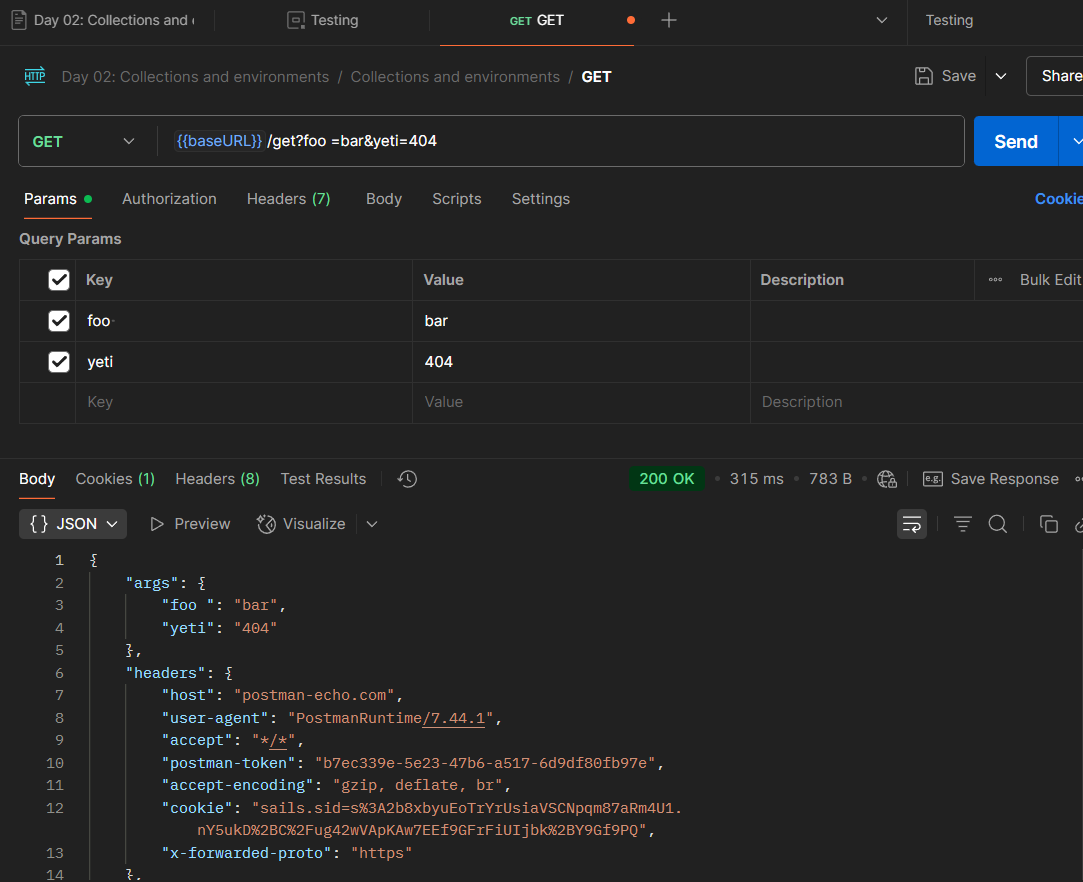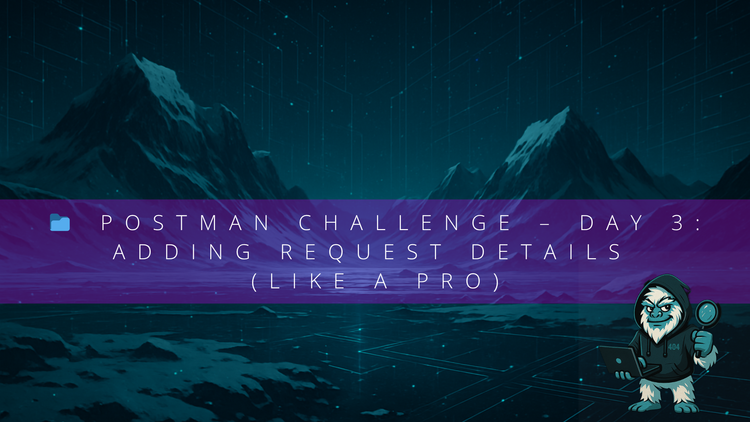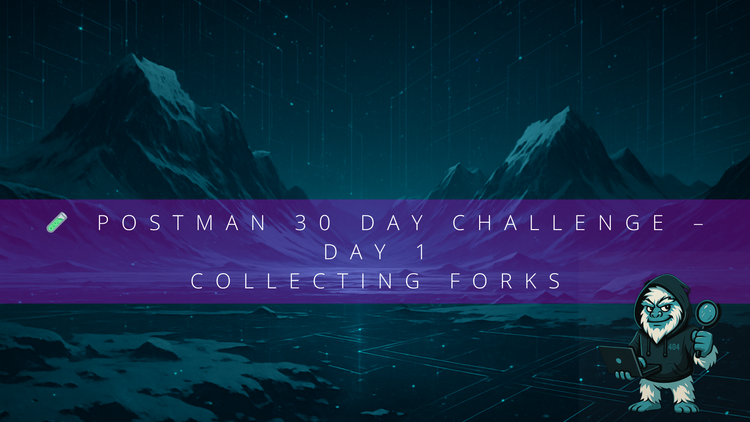🧪 Postman Challenge – Day 2: Environments & Variables

“Make your API testing life easier, one variable at a time.” – 404Yeti
Hey snow crew, Yeti here! ❄️
Today’s mission in the Postman 30 Day Challenge is all about reducing chaos and leveling up your workflow using environments and variables.
Let’s face it — if you're copy-pasting full URLs over and over, you're living in the Ice Age. Time to evolve and make Postman do the heavy lifting.
🧊 What’s an Environment?
In Postman, an environment is like your personal testing snowglobe. It holds variables (like URLs, tokens, or custom data) that you can reference in multiple requests — without rewriting anything.
It’s basically cleaner, faster, and way more secure than hardcoding stuff over and over.
Step 1: Create Your Environment
- Click the Environment tab (top right in Postman)
- Hit that sweet “+” icon to create a new environment

- Add a variable name — we’ll call it
baseURL - Set the initial value to:
https://postman-echo.com/
Step 2: Use That Variable Like a Pro
Now let’s build a request, but instead of typing out the full URL, we’ll use:
{{baseURL}}/post

If you did it right, Postman will highlight it in blue — that means the variable is working and recognized.
“If it glows blue, you’re true.” – 404Yeti
📦 Step 3: Rename Your Request (Trust Me)
Don’t leave it as “Untitled Request #548.” Give it a proper name like Test POST - Echo or Yeti_Blast_v1.
Clean naming keeps your workflow tight and your future self happy — especially when juggling dozens of requests across multiple targets.

Step 4: Switch It Up — POST to GET
Time to show Postman's flexibility.
Change your method from POST to GET
Update the URL from: /post to /get

Boom — you’re now testing a totally different endpoint without rewriting your base URL
🧪 Step 5: Add Parameters
Let’s toss in a payload. Head over to the Params tab and start adding variables — whatever you like:

Postman will update your request URL automatically with the parameters.
🚀 Step 6: Fire It Off!
Hit Send and you should see a beautiful:

Music to a tester’s ears.
Why This Matters (Especially for Security Pros)
“A disorganized tester is a slow attacker. Or worse — a sloppy one.”
Using environments and variables isn’t just for saving time — it’s about scaling your testing strategy:
- Need to test 3 different API domains? No problem — just switch environments.
- Want to reuse tokens across 10 requests? Just store it as a variable.
- Doing recon or parameter fuzzing on multiple endpoints? You’re already halfway there.
For AppSec folks like us, setting this up right means fewer mistakes, faster iteration, and better reporting.
🎉 Wrap-Up
That’s a wrap for Day 2 of the Postman 30 Day Challenge!
Today we learned how to:
Create and use environments
Store base URLs as variables
Switch between request types easily
Organize payloads and queries
Work faster and smarter like a true Icebox veteran
So props to Postman for giving us another tool that feels like a cheat code for API testing. 🧊
Until tomorrow, stay frosty.
404Yeti out. 🐾


